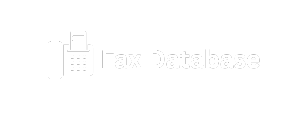The world is increasingly moving The state of Cloud to the cloud . And cloud computing has emerg as a pivotal force driving. A business transformation in the industry. This paradigm shift is transforming how organizations operate. T innovate and deliver customer value. This blog explores the current state of cloud-driven transformation and its implications for business worldwide.
The Acceleration of Cloud Adoption
The global pandemic has catalyz cloud adoption ebay data pushing many organizations to accelerate their digital transformation. A initiatives. According to Gartner, global end-user spending on public and $490 billion in 2022. potential to drive agility, scalability and innovation.
Key Trends Shaping Cloud Transformation
Here are some key trends affecting the increas spending following the adoption of cloud-bas technologies:
- Multi-cloud and hybrid strategies: Organizations are increasingly adopting multi-cloud and hybrid cloud approaches to optimize performance. T ruce vendor lock-in and maintain flexibility. This trend allows companies to leverage the strengths of various cloud providers and integrate on-premises infrastructure with cloud resources.
- Increas Investments in AI and Machine Learning: Cloud platforms are becoming the preferr environment for deploying AI and machine learning workloads. The scalability and processing power of cloud infrastructure . A enables organizations to harness the full potential of these technologies, driving innovations in areas such as predictive analytics, natural language processing, and computer vision.
- Edge Computing: The rise of ge computing complements cloud services by processing data closer to its source. This approach ruces latency and improves real-time decision-making capabilities, which is especially crucial for IoT applications and industries that require immiate data processing.
- Serverless Compute: Serverless architectures are gaining traction, allowing developers to focus on writing code without the ne to manage the underlying infrastructure. This model promotes faster development cycles and more efficient use of resources.
- Advanc Security Measures: As cloud adoption grows, so does the focus on cloud security. Advanc security features, including AI-power threat detection, zero-trust architecture, and improv encryption methods.are becoming standard offerings from cloud providers.

The Cloud Impact on Business Operations
Cloud-driven transformation has a profound impact on how businesses operate:
- Increas Agility: Cloud technologies enable organizations to rapidly scale up or down resources bas on demand, enabling agile responses to market changes.
- Cost Optimization: By shifting capital expenditures to operational spending models, companies can optimize IT spending and rirect resources to innovation and growth initiatives.
- Improv collaboration: Cloud-bas tools and platforms facilitate seamless collaboration between geographically dispers teams, supporting the trend towards remote and hybrid work models.
- Data-Driven Decision Making: The cloud’s ability to store and process large amounts of data enables organizations to derive actionable insights, leading to more inform decision-making processes.
Challenges and Considerations with Cloud Adoption
While the benefits of cloud-driven transformation are substantial, organizations face several challenges:
- Skills Gap: The rapid evolution of cloud the evolution of ai: from chatbots to ai agents: about openai o1, gems, and hubspot technologies has creat a significant skills gap in the workforce, making it challenging for organizations to find and retain talent with the necessary expertise. Companies should invest in training the existing workforce while actively hiring new talent with matching competencies.
- Data management and compliance: With data spread across multiple cloud environments, ensuring compliance with data protection regulations and maintaining effective data governance practices has become more complex.
- Integration complexities: Integrating legacy systems with cloud-native applications and managing multi-cloud environments can be technologically challenging and resource-intensive. Migrating to the cloud, while potentially retiring legacy systems, requires specialized expertise to ensure data integrity is maintain as it is moved to cold archival storage tiers. Alternatively, companies can invest in a hybrid cloud platform that maintains a few critical infrastructures on-prem while partially migrating to the cloud.
Looking forward
The pace of cloud-power b2c fax transformation is set to accelerate further. Emerging technologies such as AI, multi-modal generative AI, quantum computing, and 5G networks are pois to unlock new possibilities in cloud computing, potentially revolutionizing industries from healthcare to finance.
Organizations that embrace cloud technologies and successfully navigate the challenges of digital transformation will be well position to thrive in an increasingly competitive and dynamic business landscape. The key to success lies in developing a clear cloud strategy align with business goals, investing in skills development, and fostering a culture of innovation and continuous learning.
The Solix Common Data Platform (CDP) from Solix Technologies is a cloud data management-as-a-service application for modern data-driven enterprises. Built on open source technologies, Solix CDP can be deploy across cloud, hybrid and on-premise systems, depending on the requirements of the enterprise. Solix CDP helps companies manage and process structured, semi-structured and unstructured data for advanced analytics, compliance, infrastructure optimization, data security, machine learning, and AI.
Visit our website to learn more about how Solix CDP can boost your cloud strategy
About the Writer
Hello there! I am Haricharaun Jayakumar, a Senior Director in Product Marketing at Solix Technologies. My primary focus is on data and analytics, data management architecture, enterprise artificial intelligence, and archiving. I earn my MBA from ICFAI Business School, Hyderabad. I drive market research, lead-gen projects, and product marketing initiatives for Solix Enterprise Data Lake and Enterprise AI. In addition to all things data and business, I enjoy listening to and playing music from time to time. Thanks!
So, what exactly is data lineage? Think of it as a family tree for your data. It tells you where your data was born, how it grew and chang. and where it ends up. In the world of data lakes, it’s like a road map that shows how data flows into, around, and out of the lake.
Well, why should you care about data lineage? Well, for starters, it’s a trust thing. When you know where your data has been, you are more likely to trust it. It is also a lifesaver when it comes to following rules and regulations. Imagine an auditor knocking on your door – with good data lineage you can show them exactly what is what – and who, or what system did what to the data.

